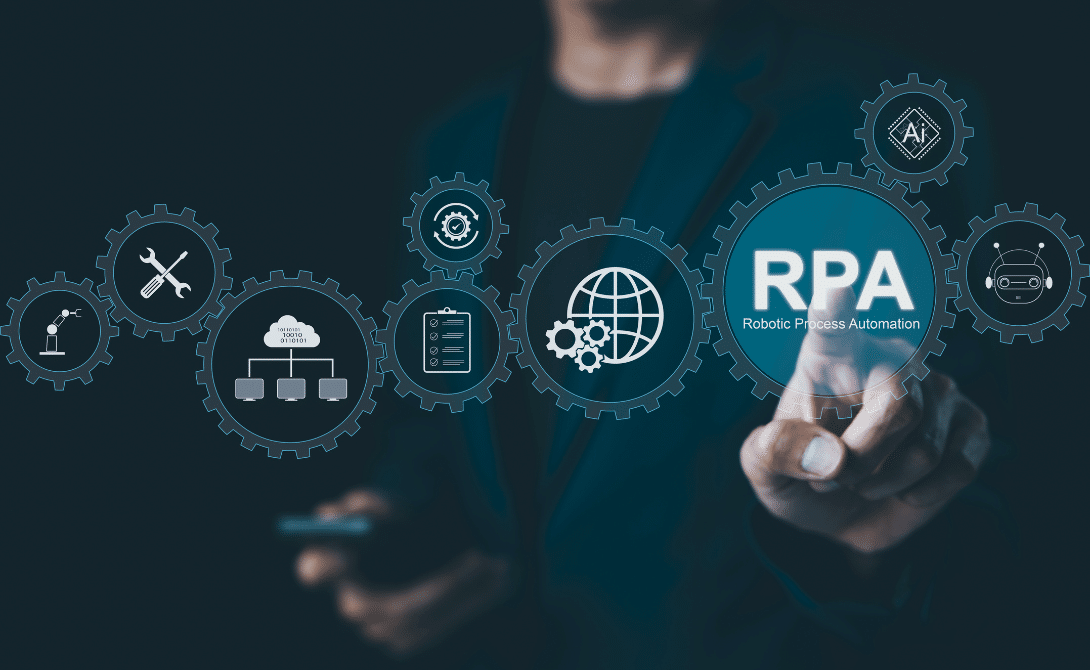Many business processes follow defined rules, are highly repetitive, and demand significant manual effort. Robotic Process Automation (RPA) targets exactly these types of tasks: using software bots, structured activities can be automated and seamlessly integrated into existing system environments – without the need for extensive system modifications.
RPA is applied in areas such as invoice processing, master data management, and data migration. It delivers immediate efficiency gains, particularly in high-volume processes with clearly defined logic. And it’s not just for large enterprises – mid-sized companies are increasingly embracing RPA as well.
According to Gartner, the global RPA software market grew by 22.1% in 2023, reaching USD 3.2 billion. In addition to traditional automation capabilities, many providers are now integrating generative AI to enhance rule-based automation with intelligent decision-making logic. The trend is clearly moving towards “Intelligent Automation” – a combination of RPA, artificial intelligence, and process analytics that makes automation more adaptive, intelligent, and scalable.
RPA in Action: Key Operational Benefits
When used strategically, RPA not only boosts efficiency but also significantly reduces the workload in operational teams. The key benefits at a glance:
- Shorter processing times: Software bots operate 24/7 – consistently and without interruptions.
- Reduced errors: Rule-based tasks are executed automatically, eliminating manual input errors.
- Scalability: New tasks or increased volumes can be handled without structural changes.
- Cost-efficiency: Standardized processes reduce operational effort – both in terms of personnel and technology.
- Improved service quality: Faster response times and consistent data enhance the user experience.
From Bots to Business Value: How to Avoid Common RPA Pitfalls
Despite mature technology, many RPA initiatives fail – not because of the software, but due to missing strategic and organizational foundations. Typical pitfalls include:
- Unclear objectives: Automation without a defined use case or value proposition often lacks impact.
- Lack of system integration: Bots that operate in silos create media disruptions and duplicate efforts.
- Team resistance: Without training and internal enablement, bots are often met with skepticism.
- Over-automation: Not every process is suitable for full automation – especially when dealing with unstructured data or exceptions.
What Makes RPA Sustainable: Key Success Factors
Successful RPA implementation requires more than just good software. It depends on a solid foundation – technically, methodologically, and organizationally. Critical success factors include:
- Iterative MVP approach: Instead of a “big bang,” a step-by-step strategy with pilot processes, measurable feedback, and clear KPIs is recommended.
- Open system integration: RPA platforms should easily connect to common standards such as REST APIs, SAP BAPIs, or IDP modules.
- Team enablement: Operating bots requires expertise. Training and clear internal responsibilities (e.g., RPA CoE or Automation Owner) are essential.
- Monitoring & governance: Continuous monitoring, logging, alerting, and version control ensure process quality and regulatory compliance.
RPA Strategy: Challenges That Need to Be Addressed
Choosing the right RPA tool is only part of the equation. The broader context – and a willingness to embrace continuous process transformation – are what make RPA successful in the long run. Key strategic considerations include:
- Data privacy and GDPR compliance for processes involving personal data
- Bot lifecycle management, including maintenance, versioning, and audit trails
- Clear ownership and role distribution across IT, business units, and process owners
- Long-term scalability and integration into the overall automation strategy
How CONVOTIS Supports Your RPA Journey
Our experts guide you through every stage – from process analysis and tool selection to full-scale implementation. We identify high-impact use cases for RPA in areas such as financial accounting, HR administration, or customer service.
Using proven platforms – including UiPath, Microsoft Power Automate, and Automation Anywhere – we ensure smooth integration into your existing system architecture. If desired, we also take over the operation, maintenance, and monitoring of your bots – complete with governance and security frameworks.
Automation Needs a Strategy. So Does Your Project.
The success of any RPA initiative hinges on how well automation is embedded into your organization – technically, strategically, and operationally. It’s not about the number of bots deployed, but about their effectiveness in real processes. Companies that identify the right use cases early, set the right priorities, and establish a robust operational model don’t just gain efficiency – they build true digital resilience.
Wondering which processes in your company are suitable for RPA and how to implement it effectively? Our experts assess your current landscape and work with you to develop a scalable automation strategy.
